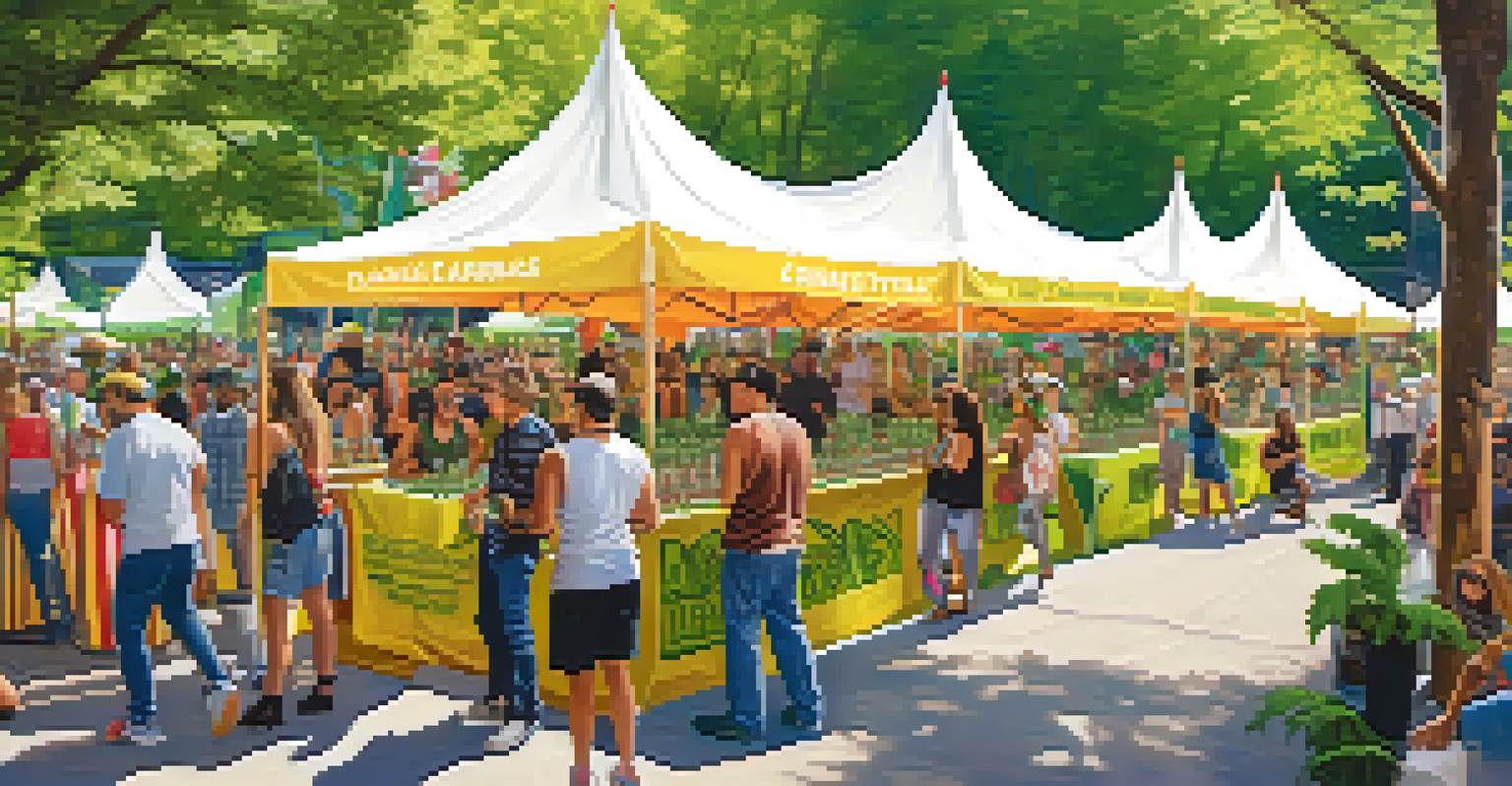The Evolution of Marijuana Perception in American Society

Historical Roots: Marijuana in Early America
Marijuana has deep historical roots in America, dating back to the colonial era. Early settlers cultivated hemp for various uses, including rope and textiles, often overlooking its psychoactive properties. This period saw marijuana viewed more as a valuable crop than a recreational drug.
Marijuana is not a drug, it's a plant. It's a herb and it has medicinal properties.
As the 19th century approached, marijuana began to gain popularity in medicinal products. It was included in many over-the-counter medications, showcasing its versatility and acceptance in society. Yet, despite its medicinal benefits, perceptions began to shift as concerns about its recreational use grew.
By the early 20th century, the seeds of stigma were being sown. The rise of anti-drug campaigns and sensationalist media narratives painted marijuana as a dangerous substance, thus laying the groundwork for future legal restrictions and societal fears.
The Role of Media in Shaping Perceptions
Media has played a pivotal role in shaping public perception of marijuana throughout history. The infamous 1936 film 'Reefer Madness' dramatized the effects of marijuana, portraying its users as deranged and violent. This film was instrumental in influencing public fear and subsequent legislation against cannabis.

As the decades progressed, the portrayal of marijuana in media varied widely. The 1960s and 1970s saw a counter-culture embrace of marijuana, often depicted as a symbol of rebellion and freedom. Shows and movies began to reflect this changing attitude, normalizing its use among younger audiences.
Marijuana's Historical Roots
Marijuana has evolved from a valuable crop in early America to a stigmatized substance, reflecting changing societal attitudes.
However, the War on Drugs in the 1980s revived negative portrayals, reinforcing stereotypes of marijuana as a gateway drug. Despite these efforts, the resilience of counter-narratives in television and film helped sow the seeds for a gradual shift in perception.
Legislation: From Criminalization to Legalization
The legislative landscape surrounding marijuana has undergone significant changes over the decades. Initially, the Marijuana Tax Act of 1937 effectively criminalized its use, leading to widespread arrests and stigmatization. This set the tone for a harsh legal framework that would dominate the following decades.
The greatest service which can be rendered to any country is to add a useful plant to its agriculture.
In the late 20th century, a grassroots movement began advocating for the decriminalization and legalization of marijuana. States like California led the charge in the 1990s, passing medical marijuana laws that challenged federal restrictions. This shift marked a turning point in public acceptance and set the stage for broader legalization efforts.
Fast forward to today, and we see a remarkable transformation; numerous states have legalized marijuana for both medical and recreational use. This evolution reflects a growing acknowledgment of the plant's benefits and a shift in societal values towards personal freedom and responsibility.
Shifting Public Attitudes: Polls and Perspectives
Public opinion on marijuana has shifted dramatically over the years, as evidenced by numerous polls. In the 1960s, only about 12% of Americans supported legalization; today, that number has soared to over 60%. This change reflects a growing acceptance of marijuana as a legitimate choice for both recreation and medicine.
The generational divide also plays a significant role in these shifting attitudes. Younger generations, having grown up in a more relaxed cultural environment, tend to view marijuana more favorably. Their perspectives challenge older narratives and push for further reform in legislation and social acceptance.
Media's Impact on Perception
Media representations have significantly influenced public views on marijuana, swinging from fear-based narratives to normalization.
Moreover, as more people share their positive experiences with marijuana, the stigma surrounding its use continues to diminish. Increased access to information and personal testimonials contribute to a more informed public that is willing to reconsider outdated beliefs.
Medical Marijuana: A Game Changer
The advent of medical marijuana has been a significant turning point in the perception of cannabis. Research highlighting its benefits for conditions like chronic pain, epilepsy, and PTSD has garnered attention and support. This scientific backing has helped legitimize marijuana in the eyes of many who once viewed it with skepticism.
As states began to pass medical marijuana laws, patients shared their success stories, further shifting the narrative. These testimonials have humanized the issue, presenting marijuana as a viable treatment option rather than merely a recreational substance. This growing body of evidence has helped sway public opinion and encourage legislative changes.
Today, medical marijuana is widely accepted, and its success has paved the way for a broader conversation about legalization. As more states adopt medical programs, the conversation around marijuana continues to evolve, reflecting a deeper understanding of its potential benefits.
Cultural Acceptance: Marijuana in Popular Culture
Marijuana's acceptance has permeated popular culture, influencing music, art, and fashion. From the iconic songs of the 1960s counterculture to contemporary artists who openly discuss their cannabis use, marijuana has become a symbol of creativity and freedom. This cultural representation has helped normalize its use and contribute to its acceptance.
Television shows and movies have also played a significant role in shaping perceptions of marijuana. Series like 'Weeds' and 'Brooklyn Nine-Nine' have depicted marijuana use in a light-hearted, relatable manner, allowing audiences to engage with the topic without fear or stigma. This portrayal reflects and reinforces the changing attitudes towards cannabis.
Shifting Public Opinion and Law
Growing acceptance of marijuana is evident in changing public opinions and the progressive legalization of its medical and recreational use.
Moreover, the rise of cannabis-themed events and festivals has created a community around marijuana, further promoting its acceptance. These gatherings celebrate cannabis culture, bringing together enthusiasts and fostering a sense of belonging that transcends traditional stigmas.
The Future of Marijuana Perception in America
As we look to the future, the perception of marijuana in American society will likely continue to evolve. With ongoing legalization efforts and increasing public discourse, more people are becoming informed about the benefits and risks associated with cannabis. This growing awareness could lead to a more nuanced understanding of marijuana use.
Emerging research on the medical benefits of cannabis also suggests a future where marijuana is viewed primarily as a health resource. As more studies validate its efficacy for various conditions, societal acceptance may shift even further towards recognizing marijuana as a legitimate form of treatment.

Ultimately, the trajectory of marijuana perception will depend on continued advocacy, education, and dialogue. By challenging misconceptions and highlighting positive narratives, society can foster a more informed and accepting approach to marijuana in the years to come.